Samye Institute has collected a series of questions to Phakchok Rinpoche about Vajrayana Practice that were asked in live teaching sessions. Many of these questions have been asked repeatedly from 2010 until 2018 in both Asia and America. We offer the transcripts of Rinpoche’s responses here as many of these questions are applicable for many students.
Table of Contents
- Questions on Visualization
- Is Vajrayana for Westerners?
- What is the Meaning of Bliss in Vajrayana?
- Relating to Negative Emotions or Outside Influences?
- The Role of Light Rays in Vajrayana: Bringing the Blessings
- Pure Perception and Mind Nature

Questions on Visualization
Student: When you are doing the sadhana, do you do the visualization while you are reading the text?
Rinpoche: Yes, when you are quite good. To get to that level, you need to do more. Do slower, read slower, and at the same time, you need to habituate yourself, such that when each word comes, the visualization appears. That’s why in the puja, [the umdze (chant master)] tries to take time so that you can have clearer visualization. But if you read so fast, you can’t picture the whole of Guru Rinpoche. So practically, read slower, you do it once, twice, third time, then you do hundred times later, then it comes very naturally.
Is Vajrayana for Westerners?
Student: It is a big question in my mind, whether Vajrayana practice works for a lot of Westerners. It seems like it works for some, but for a lot of us, it doesn’t seem like we are getting anywhere. I was talking to another practitioner today, and he was voicing the same doubts.
Rinpoche: Truly speaking he is not a practitioner. You shouldn’t call yourself a practitioner when you have doubt in your practice. It’s very simple. But your question makes sense. You are not doing it right. We are all similar in that we are easily distracted. Firstly, we have lots of doubts. Even when it seems like we arrived at some kind of certainty or confidence, within that confidence, we also have doubts. So in fact, there is no end to our doubts. So for example, one of my attendants, he is a very good monk, fully ordained, good practitioner, he does meditation. So one day when I was talking to him, I tried to cast some doubt by asking some questions. So when answering me, he said he felt comfortable with his meditation. So I said, “Are you? Are you?” I asked that a few times, and after that, he started doubting. Then I told him, “See that is exactly it.”
My teacher told me your realization should be so clear, so stable, so fully [developed], so confident, that even if Buddha himself appears in front of you saying that you are doing it wrong, you would not have doubt in your practice. Or if the devil comes to you saying that you are doing it totally right, you also would not give rise to any doubt. We need that kind of stability, but we don’t have it. So practically, when doubts first arise, like everyone else, I tried to fight back trying to find an answer for the doubt. It’s quite tiring, one year, not ready to practice. Two years, not ready practice. So one day, I say all phenomena are emptiness. Nobody created emptiness. So my doubt is emptiness actually. So each doubt comes, I just relax, I don’t fall into doubt. Not falling into doubt means I don’t chase after doubts. So when doubt comes, I relax, let the doubt come. Doubt comes, and disappears, naturally dissolves. Then I started gaining more certainty, the doubt became my friend instead of causing me problems. Why do we need to fight an enemy who has never existed from the beginning? So that’s why this text, the Meaning of Non-Conceptual Meditation is very important for any mind that gives rise to so many doubts and thoughts.
What is the Meaning of Bliss in Vajrayana?
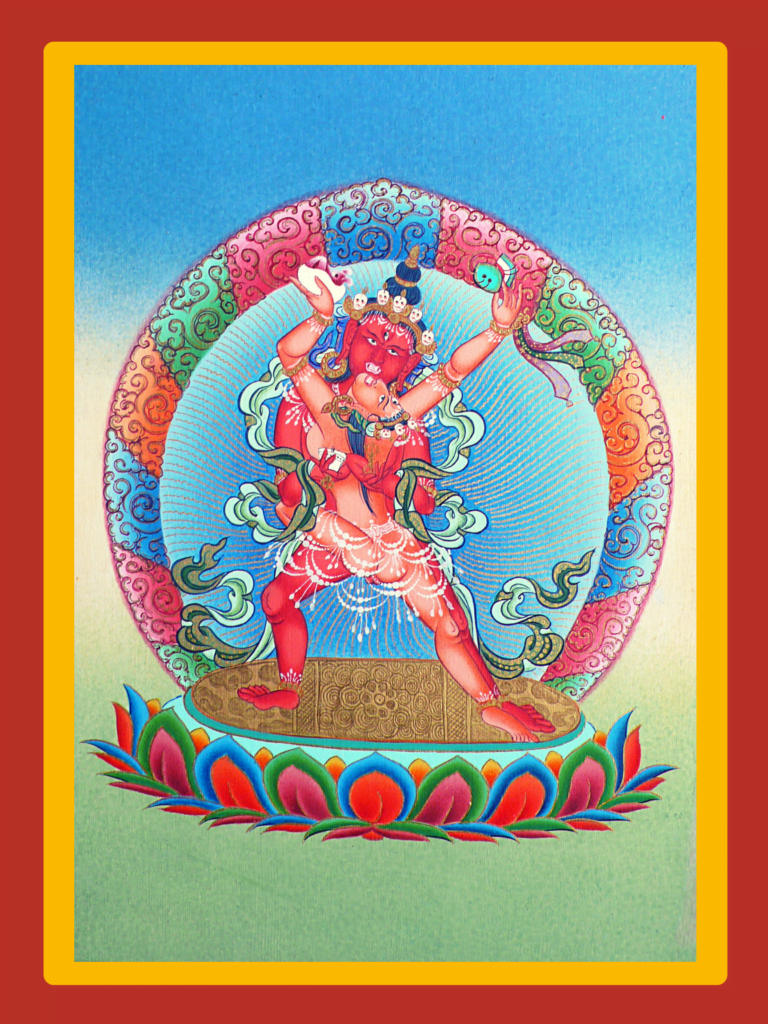
Student: I don’t know what bliss means. If we are not experiencing that … [how do we understand it?]
Rinpoche: You are experiencing that! Remember I told you to practice Guru Rinpoche in your heart with the kapala. Sometimes you feel something – a small tingling in your heart. It is not like, “I am happy.” It is like something is moving in your heart – it is a small feeling. Do you feel something when you focus on your heart? Do you feel the nectar of bliss? Don’t think too much – just focus on feeling the bliss. Bliss always starts in the heart. It is almost like the tingling when you meet a girl your like – like tiny butterflies – or rather like a tiny mosquito.
This practice is to increase this bliss. When you have bliss, then I think the word divine actually means dignity. Divine for me is dignity. Why does the human being want to say we are divine? It is because we cannot buy divinity – we cannot create it or make it. That is why we want divine – it is something beyond. This is what I have understood.
Blissfulness is here in your heart. This is my practice – I have practiced this a long time. This reduces my judgment. My dignity increases. I think that blissfulness is a support for dignity. Of course, it is also happiness, joy, and contentment. However, contentment does not have bliss, nor does happiness.
For me, in Vajrayana, the first thing is dignity. The second thing is creating a positive perception. Our perception is negative. The majority of Buddhist teachings are negative. They emphasize renunciation over and over again. In Vajrayana, they don’t teach so much about renunciation. They teach you to purify your appearances into pure perception. This is really positive. The third difference is bliss.
Tell me where does the Sutrayana teach bliss? It teaches it very seldom – though actually never. Vajrayana teaches being blissful and the blissful mantra visualization is this. Now again, don’t make a mistake here, OK? You ask, “Why must I do this? So that I am going to feel bliss?” Then your bliss goes. Just do it slowly, slowly.
Student: Does the deity develop bliss?
Rinpoche: Bliss is recognized through the pride of the deity. Then pride of the deity increases the dignity.
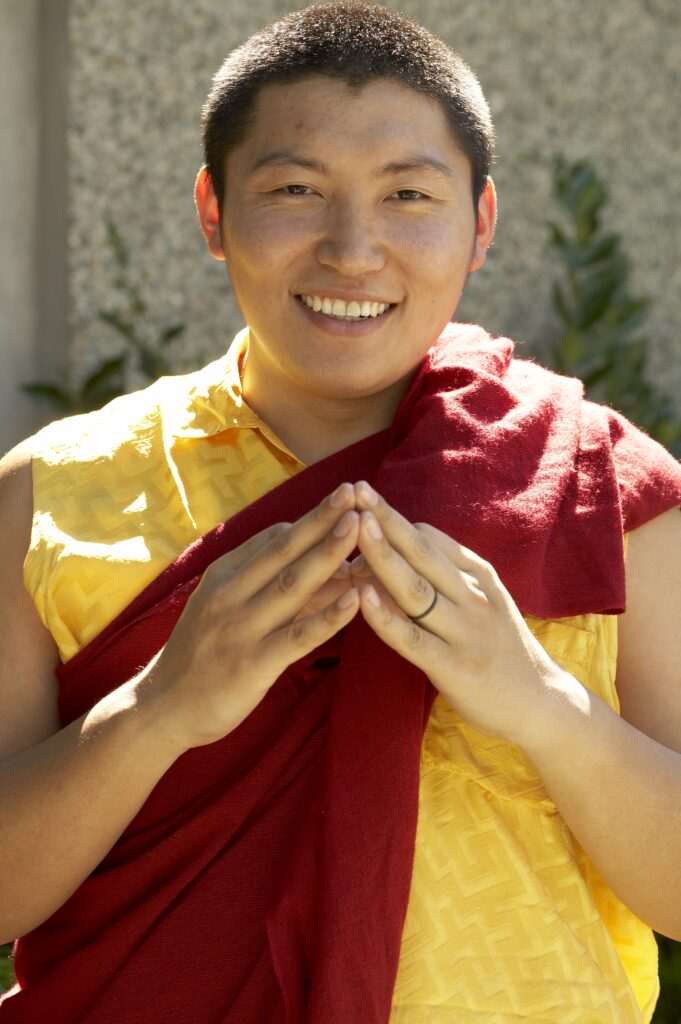
Relating to Negative Emotions or Outside Influences?
Student: I have had this question for a while. How do we know the difference between our negative emotions and the outside forces – the demons and spirits that we need protecting against? What is the difference between that and our negative emotions, such as when we feel depressed?
Rinpoche: I will tell you. Next time when you are depressed, check yourself. When that depressed feeling shakes you to the core and you have a fear inside, that means that it is the blessings of an outside factor. An outsider means a small tiny unhappy spirit or whatever. When they want to enter you, their obstacle usually impacts your inner core – your stability is shaken. This means you feel fearful inside. You don’t just feel depressed, angry, or unhappy. It shakes you and you feel scared. When that happens, that is the outside contribution.
When that happens, the first thing is Guru supplication. Supplicate Guru Rinpoche. Secondly, when you feel more stable, practice tonglen for that spirit – whoever it is. Tell him, “I give you my happiness and I take your unhappiness.” Then the spirit is going to be upset. The spirit is not going to know what to do because you are giving him loving-kindness. He is going to stop bothering you.
The third thing is the protection net – the vajra net that I taught you about previously. It has very many vajras – the vajra ground, the vajra net – do you remember? It is the protection circle. I taught this – many vajras – vajra ground, vajra fortress with an eight-sided top.
Student: Shaking in the heart – do you have another way to describe that? Because sometimes depression can be very intense – but it could just be our karma.
Rinpoche: Karma is the cause – the condition. Karma is reduced by confessing. Practicing dharma and meditating all reduces karma. The conditions need to be cut. Sometimes conditions can be an obstacle maker. You don’t need to worry too much about it but just have a little bit of an idea. That is OK. You don’t need to be obsessed. I worry about obsession.
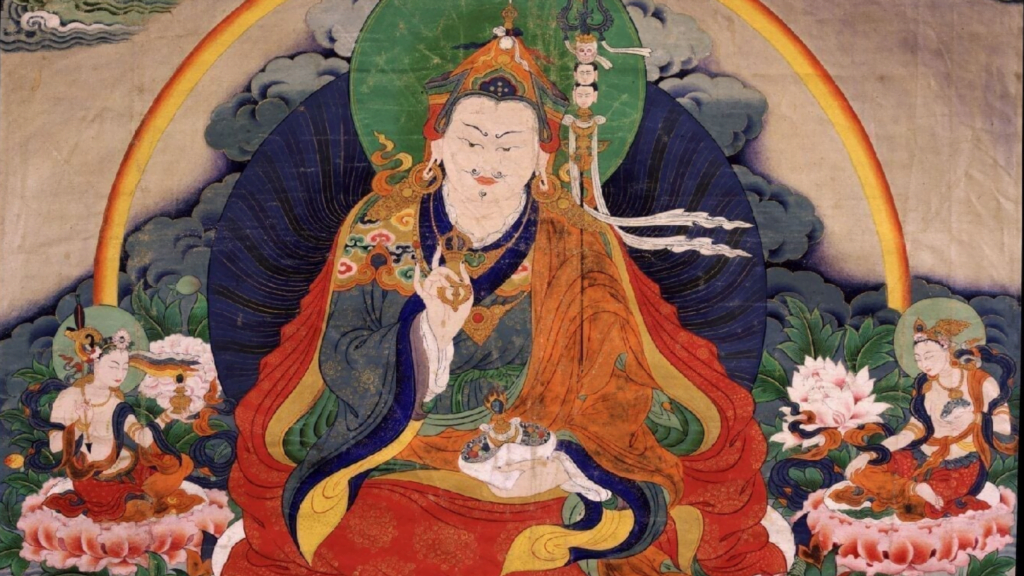
The Role of Light Rays in Vajrayana: Bringing the Blessings
Student: If Guru Rinpoche is complete from the beginning, why does Guru Rinpoche need to send light out to all the Buddhas and bring back all the blessings?
Rinpoche: You need it.
Student: But I am Guru Rinpoche. I am trying to convince myself that I am Guru Rinpoche.
Rinpoche: But you have ego-clinging.
Student: Sure.
Rinpoche: That is why you need to do it.
Student: So I am an almost complete Guru Rinpoche when I visualize it?
Rinpoche: When you are complete, you also need to send out light – there is no problem or issue with this. When you send and receive and you are already Guru Rinpoche, there is no problem. It is similar to me being a billion-dollar Bill Gates. I send a billion dollars to a Chinese businessman and then get back a billion dollars. There is no problem. However, if I earn 10,000 dollars a year and get one billion dollars back, I am going to have a heart attack!
There is nothing wrong. We need to achieve siddhis. We are the buddha – yes. We imagine that we have the nature of mind because we have seen it. But do we maintain this? Why do you need to meditate? You have the nature already. However, you cannot maintain it. This is why you need to do this. It is not that you don’t have it. You just don’t know how to maintain it. It is exactly the same thing. Do you see yourself as Guru Rinpoche? You do – but can you maintain this? No. This is why you need to keep on sending light and receiving blessings. Accumulate and get more siddhis.
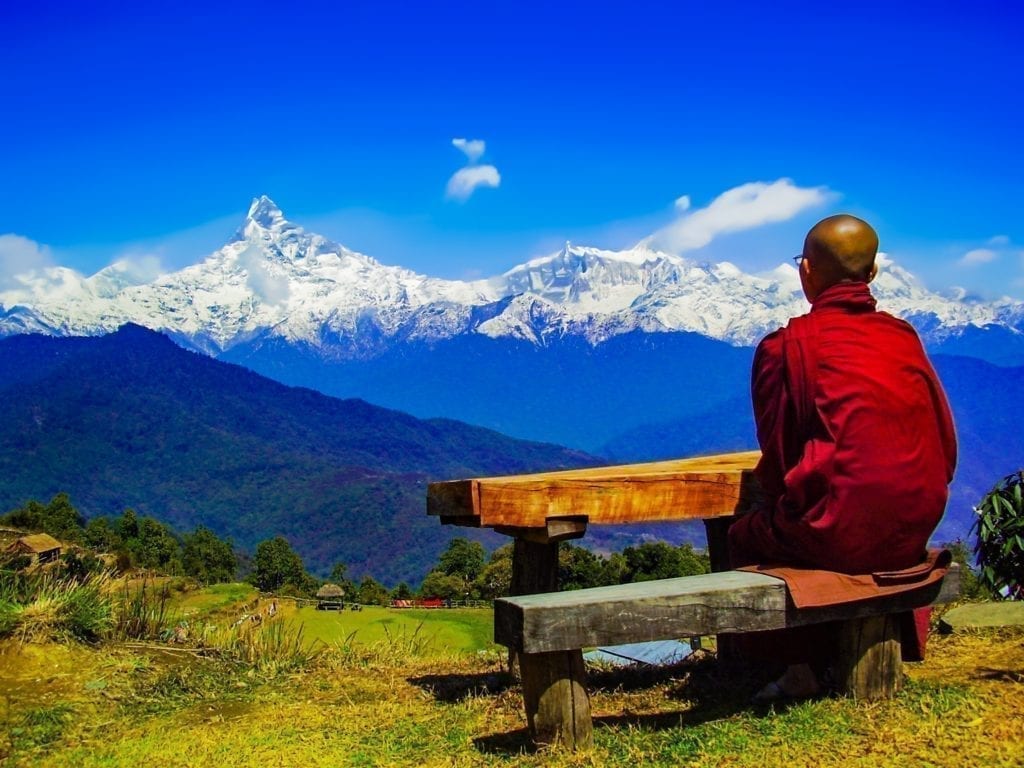
Pure Perception and Mind Nature
Student: What is the relationship between pure perception and the nature of mind?
Rinpoche: What is the relationship between compassion and a nice person?
Student: They complement each other.
Rinpoche: When you practice compassion, you become nice. Compassion is the source of being nice. When you maintain the nature of mind, want to see, recognize it or meditate on it, it helps you to develop pure perception. You see everything as becoming a little bit more pure. It means you have less judgment. Pure perception arises when you practice the nature of mind correctly.
The question is why you do this. It is because when you rest in the natural state, after being in that natural state, what do you see? You don’t discriminate. When you rest in the natural state, you don’t have subject and object. When you are free from subject and object, you don’t have any discrimination. When you rest in the natural state for one or more seconds and then look, you actually see things without discriminating – without seeing them as being nice or not nice and so on. This is called pure perception.
Student: Is that the presence you speak about?
Rinpoche: I am not talking about the presence – that is pure perception. You can relate to that more easily.
If I tell you to see everyone as Guru Rinpoche, it is impossible. This is why what you must first do is try to see Guru Rinpoche’s presence in your visualization. Then Guru Rinpoche’s presence becomes inseparable from you – from your innate nature. When you are really confident and you can really feel that you are not separate from that presence, then you can think that all the appearances that you see, all the sounds that you hear, and all the things in your mind are never separate from the innate nature.
When you really think that they are not separate, then you must meditate and try to remember this key and reflect like this more and more. Then the moment you look, you don’t see the appearance of Guru Rinpoche but in the back of your mind, you actually see beyond what you see. You can see something that is a little bit beyond what you normally see. This is the first way of perceiving pure perception.
After this, slowly but surely, the appearances that you see that you don’t like actually become more and more pleasant because you are not comparing. You see the presence. You see the nature of all phenomena and you go beyond what you see. All of this actually helps you to see in a moderate way.
When you really practice well, you see everything as being the same. This is difficult. Until now I have not achieved this – seeing everything as Guru Rinpoche.


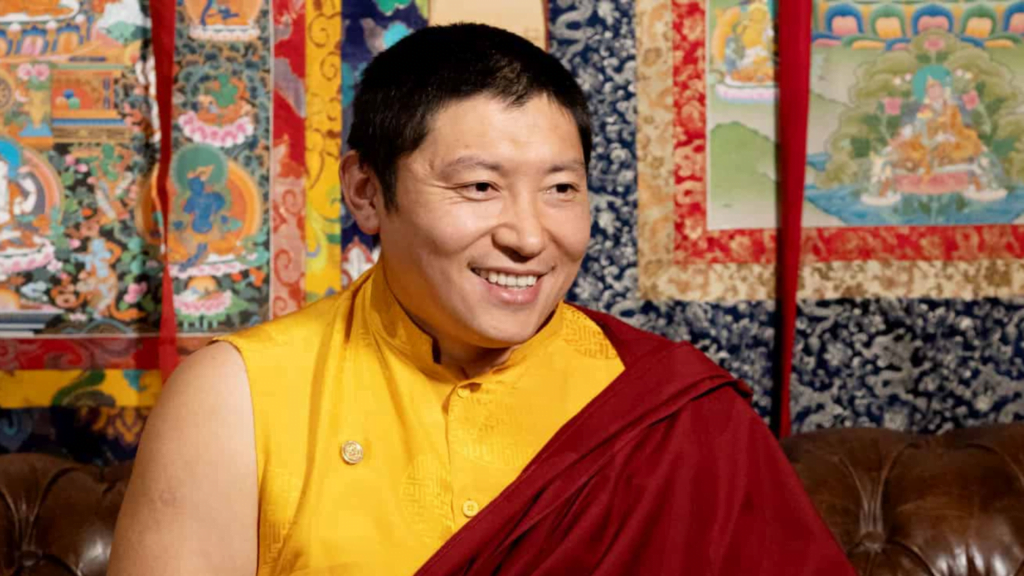







Responses